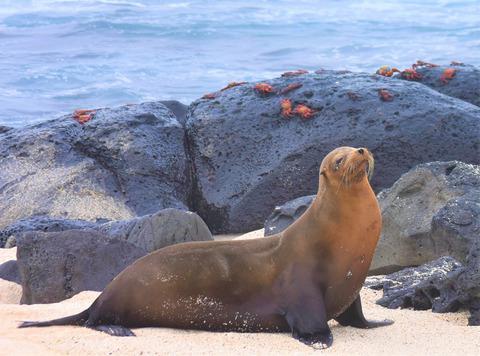当前位置:
X-MOL 学术
›
Ecol. Evol.
›
论文详情
Our official English website, www.x-mol.net, welcomes your
feedback! (Note: you will need to create a separate account there.)
Hormone-mediated foraging strategies in an uncertain environment: Insights into the at-sea behavior of a marine predator
Ecology and Evolution ( IF 2.3 ) Pub Date : 2021-05-03 , DOI: 10.1002/ece3.7590 Eugene J DeRango 1 , Jonas F L Schwarz 1 , Paolo Piedrahita 2 , Diego Páez-Rosas 3, 4 , Daniel E Crocker 5 , Oliver Krüger 1
中文翻译:

不确定环境中激素介导的觅食策略:深入了解海洋捕食者的海上行为
更新日期:2021-06-22
Ecology and Evolution ( IF 2.3 ) Pub Date : 2021-05-03 , DOI: 10.1002/ece3.7590 Eugene J DeRango 1 , Jonas F L Schwarz 1 , Paolo Piedrahita 2 , Diego Páez-Rosas 3, 4 , Daniel E Crocker 5 , Oliver Krüger 1
Affiliation

|
- Hormones are extensively known to be physiological mediators of energy mobilization and allow animals to adjust behavioral performance in response to their environment, especially within a foraging context.
- Few studies, however, have narrowed focus toward the consistency of hormonal patterns and their impact on individual foraging behavior. Describing these relationships can further our understanding of how individuals cope with heterogeneous environments and exploit different ecological niches.
- To address this, we measured between- and within-individual variation of basal cortisol (CORT), thyroid hormone T3, and testosterone (TEST) levels in wild adult female Galápagos sea lions (Zalophus wollebaeki) and analyzed how these hormones may be associated with foraging strategies. In this marine predator, females exhibit one of three spatially and temporally distinct foraging patterns (i.e., “benthic,” “pelagic,” and “night” divers) within diverse habitat types.
- Night divers differentiated from other strategies by having lower T3 levels. Considering metabolic costs, night divers may represent an energetically conservative strategy with shorter dive durations, depths, and descent rates to exploit prey which migrate up the water column based on vertical diel patterns.
- Intriguingly, CORT and TEST levels were highest in benthic divers, a strategy characterized by congregating around limited, shallow seafloors to specialize on confined yet reliable prey. This pattern may reflect hormone-mediated behavioral responses to specific risks in these habitats, such as high competition with conspecifics, prey predictability, or greater risks of predation.
- Overall, our study highlights the collective effects of hormonal and ecological variation on marine foraging. In doing so, we provide insights into how mechanistic constraints and environmental pressures may facilitate individual specialization in adaptive behavior in wild populations.
中文翻译:

不确定环境中激素介导的觅食策略:深入了解海洋捕食者的海上行为
众所周知,激素是能量动员的生理介质,并允许动物根据环境调整行为表现,尤其是在觅食环境中。
然而,很少有研究将注意力集中在荷尔蒙模式的一致性及其对个体觅食行为的影响上。描述这些关系可以进一步了解个体如何应对异质环境并利用不同的生态位。
为了解决这个问题,我们测量了野生成年雌性加拉帕戈斯海狮 ( Zalophus wollebaeki ) 的基础皮质醇 (CORT)、甲状腺激素 T3 和睾酮 (TEST) 水平的个体间和个体内差异,并分析了这些激素如何与觅食策略。在这种海洋捕食者中,雌性在不同的栖息地类型中表现出三种空间和时间上不同的觅食模式之一(即“底栖”、“中上层”和“夜间”潜水员)。
夜潜者与其他策略的区别在于 T3 水平较低。考虑到代谢成本,夜间潜水员可能代表一种积极保守的策略,即较短的潜水时间、深度和下降率,以捕捞根据垂直昼夜模式在水柱上迁移的猎物。
有趣的是,海底潜水员的 CORT 和 TEST 水平最高,这种策略的特点是聚集在有限的浅海海底,专门捕食有限但可靠的猎物。这种模式可能反映了激素介导的对这些栖息地特定风险的行为反应,例如与同种动物的高度竞争、猎物的可预测性或更大的捕食风险。
总的来说,我们的研究强调了激素和生态变化对海洋觅食的集体影响。在此过程中,我们深入了解机械约束和环境压力如何促进野生种群适应性行为的个体专业化。











































 京公网安备 11010802027423号
京公网安备 11010802027423号